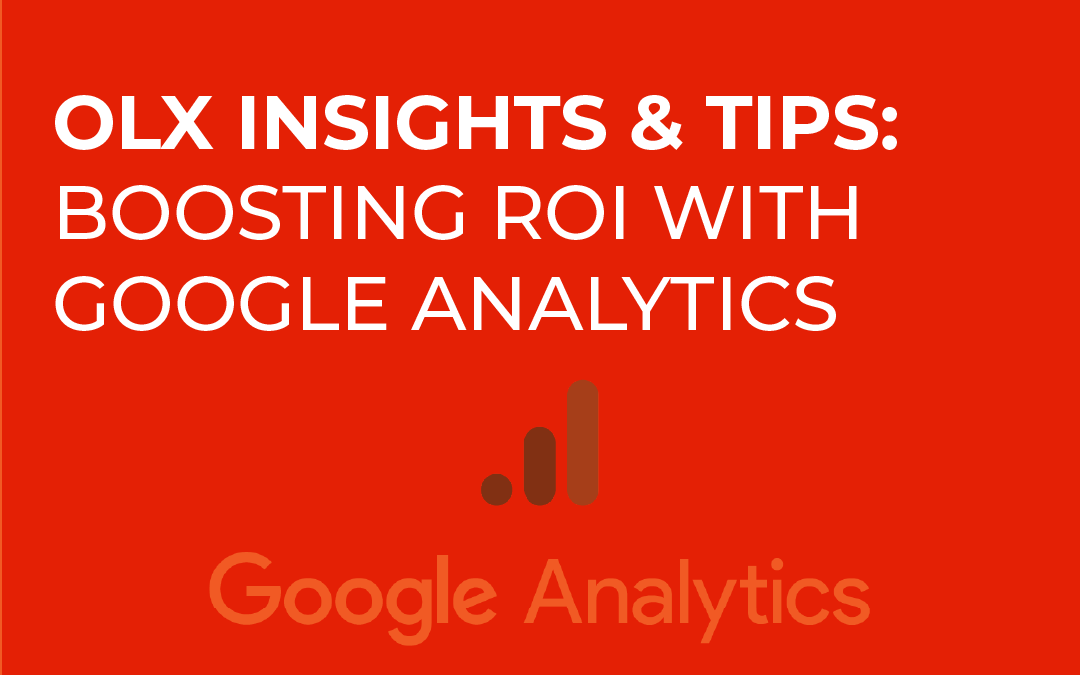You’re staring at your website stats, wondering where your leads are coming from. Are they good? Are you paying too much for them? It can feel like shouting into the wind. But what if you could see exactly what works and what doesn’t? This is where a powerful, free tool called Google Analytics comes into play, changing how you approach the lead business.
For anyone buying or selling leads with the power of the Online Lead Exchange (OLX), understanding your website traffic is everything. It’s the difference between guessing and knowing. Google Analytics gives you the roadmap to see who is visiting your site, how they found you, and what they do once they arrive. This data is pure gold for your strategy.
Table Of Contents:

- What Is Google Analytics, Really?
- Why Your Lead Business Needs Google Analytics
- Setting Up Your Tracking for Success
- The Data That Matters for Lead Sellers and Buyers
- Tying It All to the Online Lead Exchange
- Conclusion
What Is Google Analytics, Really?
Let’s strip away the technical jargon for a second. Think of Google Analytics as a very smart welcome mat for your website. It doesn’t just say hello; it remembers every visitor that steps on it. It notes where they came from, their general location, and which pages of your site they visit.
It’s a web analytics service from Google that tracks and reports website traffic. It is completely free, which is pretty amazing considering the power it gives you. All it takes is a small bit of code on your website, and you start collecting information that can completely change your business.
For lead generators, this means you can see which marketing campaign brought in that perfect lead. Was it a Facebook ad, a Google Search, or an email blast? You will know for sure.
Why Your Lead Business Needs Google Analytics
Running a business without data is like driving with your eyes closed. You might get somewhere, but it is probably not where you intended to go. Google Analytics removes the blindfold. It gives you clear insights into your website’s performance and your visitors’ behavior.

You can identify your top sources of traffic. This lets you double down on the channels that work and stop wasting money on those that do not. Maybe you will find that your organic search traffic converts at a higher rate than your paid ads. That information is critical.
Ultimately, it helps you understand the quality of the traffic you are getting. Are visitors sticking around, or are they leaving immediately? Answering this question helps you refine your landing pages and improve your lead quality, which is crucial for success on an online lead exchange.
Setting Up Your Tracking for Success
Getting started might sound complicated, but it is more straightforward than you think. The current version, Google Analytics 4 (GA4), operates on an event-based model. This is perfect for lead generation because every action, from a page view to a form submission, can be tracked as a distinct event.
You need to add a small piece of JavaScript code to every page of your website. Google provides this code, and there are many plugins for platforms like WordPress that make this a copy-and-paste job. Once that code is in place, it starts collecting anonymous data about your visitors.
The most important step for a lead business is setting up Conversions. A conversion is a specific action you want a user to take. For you, that is almost certainly a visitor filling out a lead form. By setting this up, you can track exactly how many leads your site is generating.
Here is a simple process to get your account running:
- Create your Google Analytics account and a new GA4 property. During setup, you will provide information like your website name and URL.
- Find your Measurement ID. This unique identifier starts with a G- and is what connects your website to your GA4 property.
- Install the Google tag on your website. You can do this by pasting the code snippet directly into your site’s HTML, or by using an integration like a WordPress plugin or Google Tag Manager for easier management.
- Verify that data is being collected. Go to the Realtime report in your GA4 property. If you visit your own website, you should see your activity appear within a few moments.
- Set up a conversion event. For a lead form, GA4 might automatically detect a “form_submit” event. You can then go into your settings and simply toggle a switch to mark that specific event as a conversion.
This setup creates the foundation for all your data-driven decisions. It moves you from wondering what is happening to knowing what is happening.
The Data That Matters for Lead Sellers and Buyers
Once you are collecting data, you might feel a little overwhelmed. There are dozens of reports and hundreds of metrics. The trick is to focus on the information that directly impacts your bottom line as a lead buyer or seller.
User Acquisition: Finding Your Goldmine
The Acquisition reports are your first stop. These reports tell you exactly how users are finding your website. You will see traffic broken down into channels like Organic Search, Paid Search, Social, and Direct.
This is where you find your best lead sources. Imagine discovering that a specific blog post you wrote is bringing in dozens of high-quality leads every month through organic Google Search. That is an asset you can build on. It is invaluable data when you are preparing leads for an online lead exchange.
As a seller, you can use this information to price your leads more effectively. A lead that came from a highly targeted search query is often more valuable than one from a general social media ad. Now you have the data to prove it.
User Behavior: What Are They Doing?

So, people are on your site. Now what? The Behavior reports show you what they do once they arrive. In GA4, focus on metrics like Engagement Rate and Engaged Sessions. An Engaged Session is a visit that lasts longer than 10 seconds, has a conversion event, or has at least two pageviews.
A low engagement rate might mean your landing page is not matching what they expected from your ad. Or maybe your website is confusing, with a slow page loading time that frustrates visitors before they can act. This is critical because every second of loading time can decrease conversions.
By analyzing this behavior, you can make changes to your website to keep people engaged. Better engagement often leads to higher quality leads. This helps buyers, too, because they receive leads from people who are genuinely interested.
Here is how some common metrics have changed with the move to GA4:
| Metric (Universal Analytics) | Replaced By (Google Analytics 4) | What It Means for You |
|---|---|---|
| Bounce Rate | Engagement Rate | Measures how many users interacted meaningfully, not just who left. |
| Pages / Session | Views per User | Shows how much content an average user consumes over their lifetime. |
| Goals | Conversions | Tracks the specific actions you care about, like lead form submissions. |
Conversions: Tracking What Actually Counts
This is the most critical part. Your Conversions report is your scoreboard. Every time a visitor fills out your lead form and hits submit, Google Analytics can count it. This tells you your conversion rate, the percentage of visitors who become leads.
You can see which traffic channels have the best conversion rates. You can see which pages on your site convert the best. This data lets you optimize your entire marketing funnel, from the ad the user clicks to the thank-you page they see after submitting their information.
It transforms your business from just generating traffic to generating results. You are no longer just guessing which marketing efforts are turning into actual leads. You have cold, hard data telling you exactly what works.
Understanding Your Audience: Who Are Your Visitors?
Beyond how people find you and what they do, Google Analytics also tells you who they are. The Demographic and Tech reports provide a wealth of anonymous, aggregated data. This includes age ranges, gender, geographic locations, and even interests.
For a lead seller, this is powerful. You might discover a new, untapped market in a different city or a surprising interest shared by your most convertible traffic. This allows you to refine your ad targeting and content strategy to attract more of the right people.
The Tech reports show you what devices, browsers, and operating systems your visitors use. If you see that 80% of your leads come from mobile users, you better have a mobile-friendly website and lead form. Small technical glitches on a specific browser could be costing you a fortune in lost leads, and this report helps you spot them.
Tying It All to the Online Lead Exchange
Now, let’s connect all these dots back to the main event: making money with leads. Using a marketplace gives you access to a huge network. But to stand out and maximize your profit, you need an edge. That edge is data from Google Analytics.
For sellers, you are not just selling a name and phone number anymore. You are selling a well-sourced, high-intent lead. You can show buyers that your leads come from specific, high-performing organic searches or ad campaigns. This justifies a higher price and builds trust.
For buyers, the game changes too. When you purchase leads, you send them to your own sales funnels or landing pages. By using your own Google Analytics, you can track which lead sources from an online lead exchange perform the best for you. Maybe you will find that leads from a certain seller consistently convert into customers at a higher rate.
GA4 also introduces powerful machine learning capabilities. It can analyze your data to create predictive audiences, such as users who are likely to convert in the next seven days. A savvy lead seller could use this insight to create highly targeted campaigns, nurturing these potential leads and increasing their value before they are even sold.
This feedback loop is incredibly powerful. Sellers can refine their generation methods based on buyer performance data. Buyers can spend their money more wisely, focusing on the sources that deliver the best return on investment. It creates a smarter, more efficient marketplace for everyone involved.
This level of insight is exactly what top performers use to get ahead. On a platform like Online Lead Exchange (OLX), where hundreds of buyers in the call center, email, and SMS industries compete, data makes you a winner. OLX is the biggest and best lead store for connecting buyers and sellers of both US and international leads.
If you are ready to stop guessing and start knowing what works, it is time to pair smart analytics with a powerful marketplace. Whether you are looking to purchase, sell, or qualify leads, OLX offers the platform, technology, and seller protection to help you succeed. Contact us today to see how we can help you turn your leads into profit.

Conclusion
At the end of the day, Google Analytics is more than just a tool for tracking website visitors. It is a business intelligence machine that can give you a serious competitive advantage. It helps you understand your customers, refine your marketing, and improve your lead quality.
By combining the insights you get from Google Analytics with a premier marketplace like an online lead exchange, you build a powerful engine for growth. You create a system where data drives decisions, leading to better leads, happier clients, and a stronger bottom line. The path to a more profitable lead business is paved with good data.




